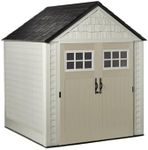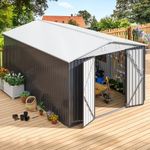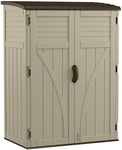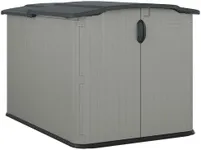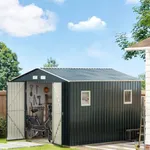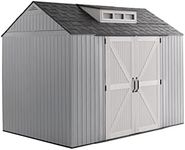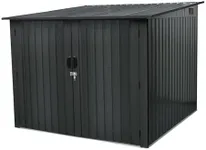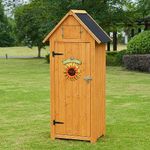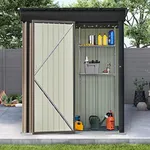Buying Guide for the Best Storage Sheds
Choosing the right storage shed involves considering several factors to ensure it meets your needs. A storage shed can be a valuable addition to your property, providing extra space for tools, equipment, and other items. To make the best choice, you need to evaluate various specifications and how they align with your requirements. Here are some key specs to consider when selecting a storage shed.SizeSize refers to the dimensions of the storage shed, typically measured in square feet. This is important because it determines how much space you will have for storage. Sheds come in various sizes, from small (under 50 sq ft) for basic storage needs, medium (50-100 sq ft) for garden tools and bicycles, to large (over 100 sq ft) for more extensive storage or even a workshop. Consider what you plan to store and choose a size that provides enough space without overwhelming your yard.
MaterialThe material of the shed affects its durability, maintenance, and appearance. Common materials include wood, metal, and plastic. Wood sheds offer a traditional look and can be customized but require regular maintenance. Metal sheds are durable and low-maintenance but can be prone to rust. Plastic sheds are lightweight, easy to assemble, and resistant to rot and insects but may not be as sturdy. Choose a material based on your preference for aesthetics, maintenance, and longevity.
Roof StyleRoof style impacts both the appearance and functionality of the shed. Common styles include gable, gambrel, and flat roofs. Gable roofs are the most traditional, providing good water runoff and extra headroom. Gambrel roofs offer even more headroom and storage space in the loft area. Flat roofs are modern and simple but may not handle heavy snow loads well. Consider the climate in your area and the look you prefer when choosing a roof style.
FoundationA proper foundation is crucial for the stability and longevity of your shed. Options include concrete slabs, gravel bases, and wooden platforms. Concrete slabs provide a solid, permanent base but can be expensive. Gravel bases are easier to install and provide good drainage. Wooden platforms are a good DIY option but may require more maintenance. Choose a foundation based on your budget, the shed's size, and the ground conditions in your yard.
VentilationVentilation helps prevent moisture buildup and keeps the shed interior cool. This is important for protecting your stored items from mold and mildew. Look for sheds with built-in vents or windows that can be opened. If you live in a humid climate or plan to store items sensitive to moisture, prioritize good ventilation.
SecuritySecurity features protect your belongings from theft. Consider sheds with lockable doors, reinforced hinges, and sturdy construction. If you plan to store valuable items, look for sheds with enhanced security features. Assess the level of security you need based on the value of the items you will store and the safety of your neighborhood.
AssemblyAssembly refers to the ease of putting the shed together. Some sheds come as pre-fabricated kits with detailed instructions, while others may require more complex construction. If you are not handy, look for sheds that are easy to assemble with minimal tools. Consider your DIY skills and the time you are willing to invest in assembly when making your choice.
